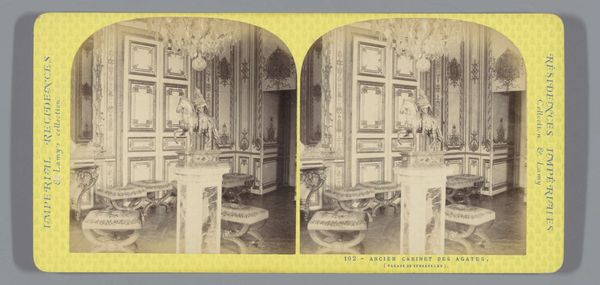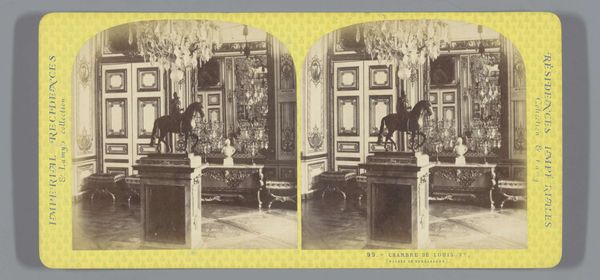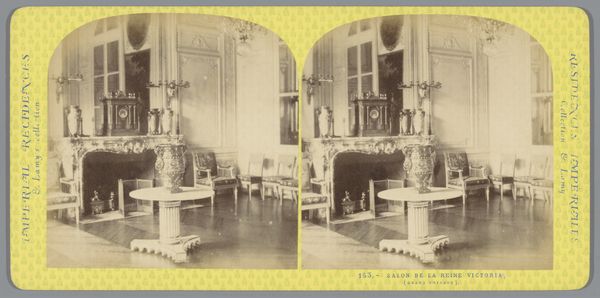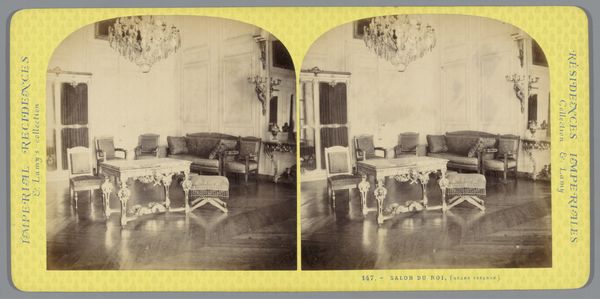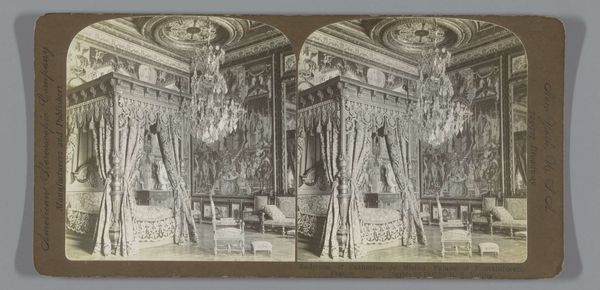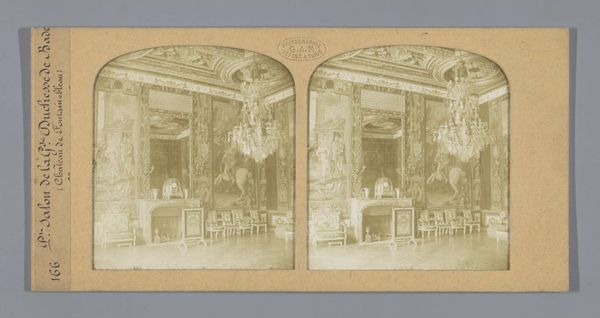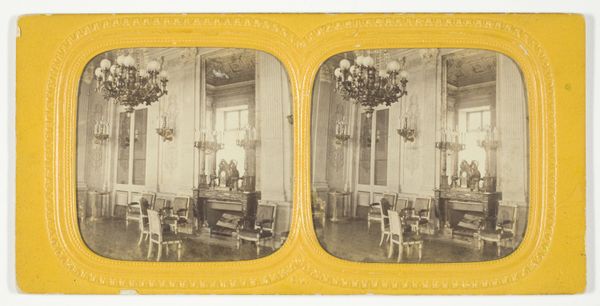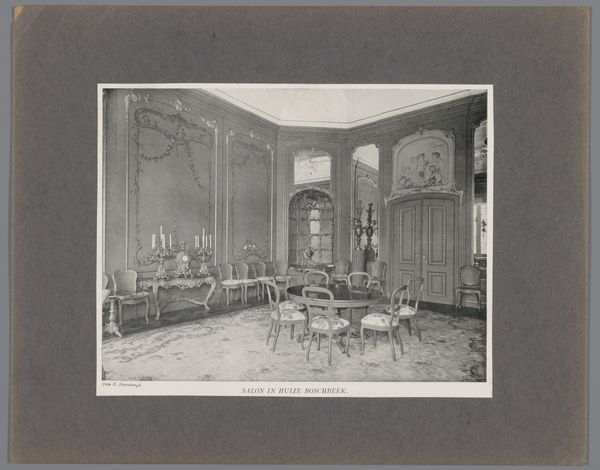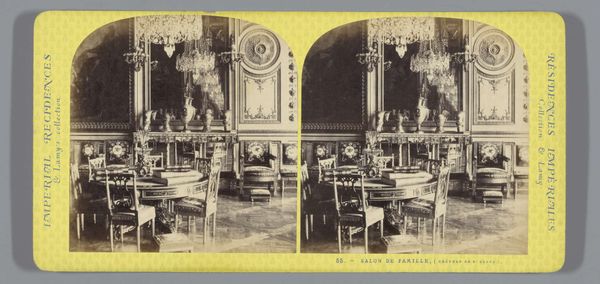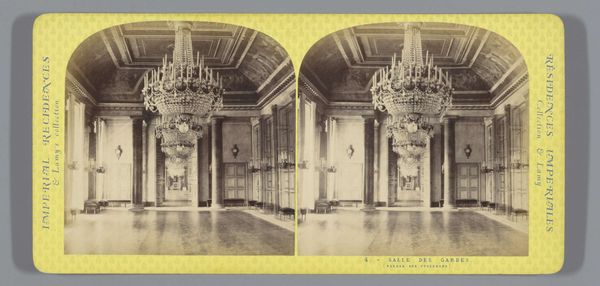
Werkvertrek Napoleon Bonaparte in zijn slaapkamer in het Grand Trianon 1860 - 1880
0:00
0:00
#
yellowing
#
aged paper
#
vintage
#
yellowing background
#
photo restoration
#
retro 'vintage design
#
old-timey
#
golden font
#
historical font
#
columned text
Dimensions: height 87 mm, width 178 mm
Copyright: Rijks Museum: Open Domain
Curator: This albumen print, dating roughly from 1860 to 1880, depicts "Werkvertrek Napoleon Bonaparte in zijn slaapkamer in het Grand Trianon." The artist is Ernest Eléonor Pierre Lamy. Editor: It’s incredibly ornate. The chandelier especially catches my eye – a cascade of light frozen in time, suspended above this workspace. There's an immediate feeling of opulence tempered by, dare I say, an emptiness. Curator: Yes, the imagery throughout underscores power. Note how the symmetry of the room lends a sense of balance and order – elements frequently employed to visually convey authority. The trappings, such as the statue atop the mantle, seem to allude to strength and masculine virility, mirroring Napoleonic ambitions. Editor: That's right. The eye is led towards these classical forms of masculine representation—it is almost as if Napoleon is symbolically present, always overseeing this stage, this workspace. There is a continuity there to pre-existing archetypes, to symbols of power, which would be quickly readable. Curator: Precisely. Understanding that France underwent various sociopolitical shifts during Lamy's time, it is easy to assume that this image isn't just a representation of Napoleon’s workspace; rather, it also functions as a subtle commentary on power dynamics across French regimes. In post-Napoleonic France, any focus on prior leaders had cultural and political reverberations. This photograph's symmetry becomes a way of creating order out of chaos and presenting a familiar figure of power within the ever-shifting French state. Editor: But the stillness, almost staged perfection. Wouldn’t you say it betrays a kind of tension as well? The objects are meant to convey significance but taken as a whole, it makes me question who they really were intended to influence. Was this performative iconography meant for local elites or for export to a broader audience of imperialists and royalty? Curator: It highlights how spaces are shaped to mold power. By showing its supposed physical origins—in this case, the former leader’s office. It gives that sense of historical grounding and the notion that it grows organically. It seems rather paradoxical to imagine Napoleon’s actual raw command existing inside these constructed spaces. Editor: It is strange, isn’t it? A carefully curated space speaks volumes. The image lingers with me precisely because it freezes these cultural anxieties. Curator: It serves as a reminder of the stories embedded within spaces, isn’t it? It invites one to understand and reconsider assumptions about power and representation in a particular cultural context.
Comments
No comments
Be the first to comment and join the conversation on the ultimate creative platform.
